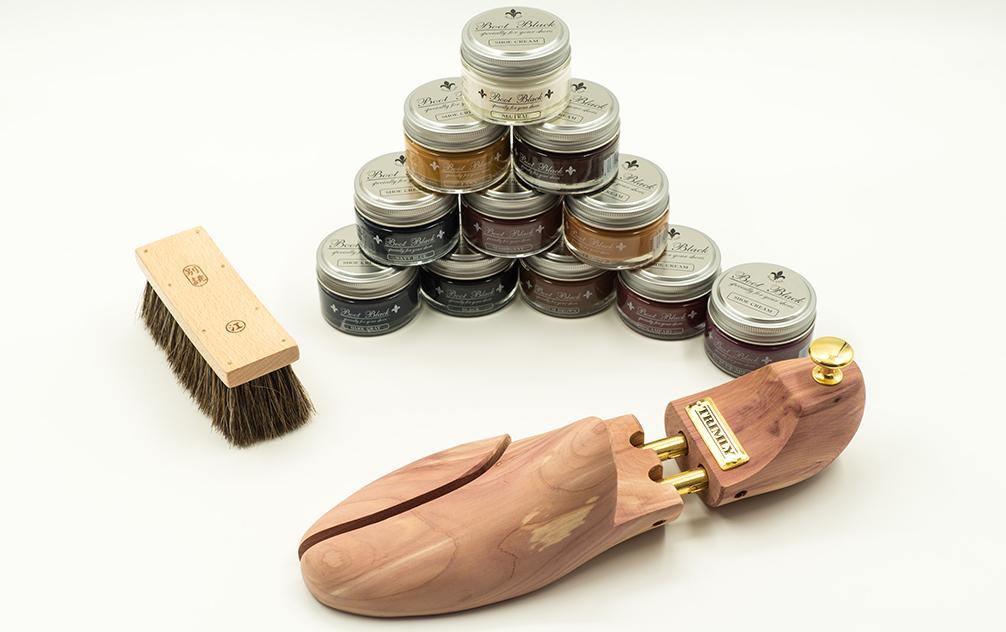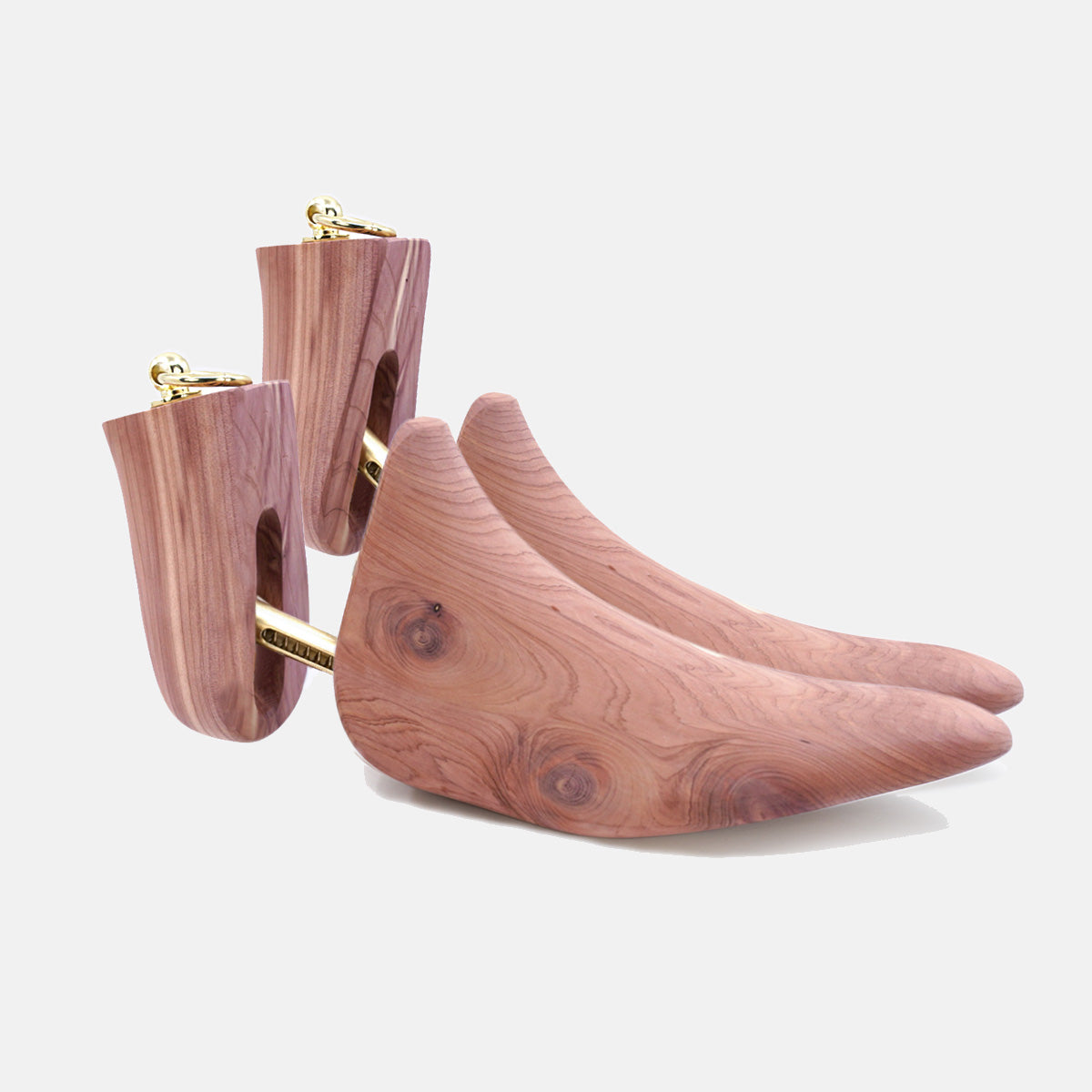Get 10% Off - Auto Applied At Checkout
Get 10% Off - Auto Applied At Checkout
Shoe Trees
shoe stretchers
Sets

5 ways to extend the life of your shoes
May 09, 2017 3 min read
When I served in the Army you could tell a lot about a soldier by how he maintained his kit. Likewise, I can still tell a lot about a man by his shoes. How he maintains them signals to the world how he looks after himself and his business. Sure, anyone can look good in a new pair of shoes. The rest, however, is up to us.
The longevity of one's dress shoes is based on many factors: the construction, the leather, one's gait, one's weight, frequency of use and of course shoe care. In this blog post we provide advice on how you can get extra-mileage out of your shoes so that they go the distance and of course look good for longer. 
 Nothing says refined like a pair of polished shoes. A man can get away with a cheap suit if he has a well-polished pair of leathers. But not even a Savile Row suit can save him if his shoes look old or poorly maintained.
Nothing says refined like a pair of polished shoes. A man can get away with a cheap suit if he has a well-polished pair of leathers. But not even a Savile Row suit can save him if his shoes look old or poorly maintained.
Shoe cream and polish will rejuvenate the leather and colour of your shoes and provide the all important protective wax coat. To prevent damage from external moisture, dirt and grime, aim to polish your shoes at least once a week.
Shoe trees are arguably the most important tool in your shoe care tool kit. Your feet have around 250,000 sweat glands that produces up to half a pint of sweat a day. Moisture rots the lining in your shoes and wears away at the leather. A shoe tree (cedar is best) will help wick away damaging moisture, ensure the shoe returns to its natural shape ( and reduces wrinkling) and prevent foot odour.
We've all been caught out in the rain. A bit of water won't damage your shoes. Even a lot of water isn't fatal. But incorrectly drying them can be.
There is no quick trick to drying out wet leather shoes. You will need newspaper, a pair of (cedar) shoe trees, some shoe conditioner and a dry open space. The first thing you obviously do is wipe down the shoe to get rid of excess moisture on the exterior. Remove any wet shoe laces (and footbeds) and dry them separately. Stuff newspaper into the shoe and place them somewhere warm and dry for about 12 hours, or until nearly dry. NEVER place them directly next to a heat source. This can be a fatal mistake! Replace the newspaper with shoe trees and apply a very small amount of shoe conditioner to ensure the leather doesn't dry out too much.
Buy the best quality you can afford. Cheaply-made shoes are only affordable because short-cuts are made in the manufacturing process and materials are sourced from the lowest bidder. A well constructed shoe (e.g. Goodyear welt construction) can be resoled, is more comfortable over time and can last for decades. A quality full grain leather will also look better with age and go the distance. If you spend a little more on a pair of quality leather shoes and follow the advice above, you will have them for decades, which in turn will save you in the long-term.
Quality also means your shoes fit your feet correctly. If, for example, you have wide feet but purchase a narrow fitting shoe, your feet will put a lot of strain on the sole, leather and lining of the shoes, resulting in early wear. If you have pronate feet, flat feet or high arches, you may need a pair of shoes with a more flexible forefoot, an anatomically-correct bending point or room for orthotics. Most shoes made on scale are a one-size-fits-all.
Subscribe
Sign up to get the latest on sales, new releases and more …














